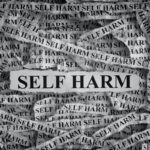
John Baker looks at a recent study of the Oxevision system, which claims that their ‘vision-based patient monitoring’ reduces self-harm on acute mental health wards.
[read the full story...]
John Baker looks at a recent study of the Oxevision system, which claims that their ‘vision-based patient monitoring’ reduces self-harm on acute mental health wards.
[read the full story...]
John Baker summarises a new Norwegian trial published last week, which compares an open-door policy to treatment-as-usual in urban psychiatric inpatient wards.
[read the full story...]
Dr Kirsten Lawson is back! In this blog, Kirsten explores a service evaluation of trauma informed care practices in acute inpatient units, looking specifically at reductions in self-harm and restraint practices.
[read the full story...]
Alison Faulkner writes a powerful blog on the use of body-worn cameras in acute mental health services, which centres around a qualitative interview study conducted with service users, staff and nursing directors.
[read the full story...]
In her debut blog, Layla Mofrad summarises an umbrella review exploring the theory, barriers & enablers for patient and public involvement in health and social care research and service delivery.
[read the full story...]
Amelia Talbot looks at a recent qualitative study of patient and carer perspectives, which explores the reasons why some patients do not receive a psychosocial assessment in emergency departments following self-harm.
[read the full story...]
Felicity Pearce, Bani Kahai and Derek Tracy summarise a recent meta-analysis examining safety planning-type interventions for suicide prevention.
[read the full story...]
Zuva Dengu summarises a recent mixed-methods study on mental health staff experiences of occupational wellbeing in a psychiatric place of safety service.
[read the full story...]
Charlotte Steel and Camilla Biggs review a qualitative study on emergency workers’ experiences of the use of section 136 of the Mental Health Act 1983.
[read the full story...]
Ian Cummins explores a qualitative study which finds that police officers are ambiguous about their involvement in mental health emergencies.
[read the full story...]